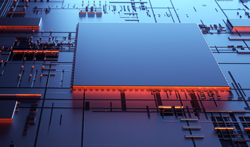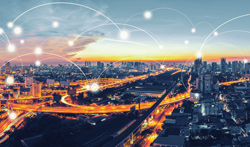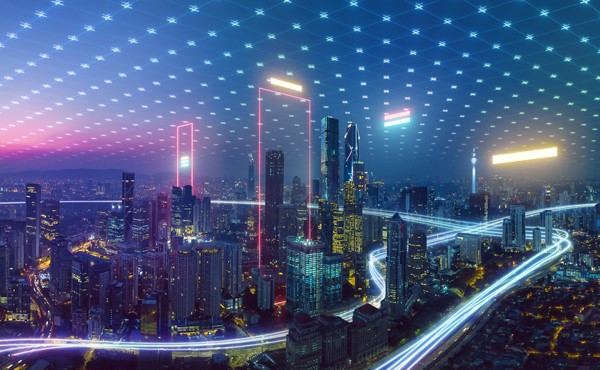Making our urban centers more conducive to modern life is not a trend that is going away. The United Nations project that the portion of the world’s population living in urban areas will increase from 55% (2018) to 68% by 2050.[1] So making cities more sustainable, safe, and inhabitable is emerging as a significant opportunity.

Source: World Urbanization Prospects: The 2014 Revision.
Technology is enabling smart cities to:
- Increase public safety with predictive policing, faster response times for emergency services, automated incident detection, and push notifications of emergency events.
- Improve air quality through reduced traffic and congestion
- Support economic development by making it easier for citizens and visitors to access and support local businesses
Smart Cities Enhance Quality of Life
The city of Houston has approved the use of digital kiosks, which are already used extensively in New York City. These kiosks will act as a public service for citizens and visitors, display ads and way-finding information, and drive revenue for the city through paid advertising.
In Sydney, smart poles are equipped with speakers for public announcements and cameras for real-time traffic analysis, plus they provide citizens with Wi-Fi.
The city of El Monte, California, is equipping parking lots with sensors and displays to reduce emissions and minimize total vehicle miles traveled.
Cincinnati/Northern Kentucky International Airport (CVG) uses IoT sensors to assess and optimize passenger wait times and reduce crowding.
These smart city initiatives aim to enhance the quality of life for citizens through increased efficiencies. Using data and technology to add conveniences and remove friction, localities, organizations, and businesses can improve lives.
Smart Cities: Powered by 5G
To make a city smart, 5G will play a significant role. It’s not just the higher data speeds, reduced lag, and increased bandwidth that come into play. It’s also the uninterrupted and consistent connectivity users will experience. Plus, since 5G enables large numbers of connected devices, we will have more data and opportunities to modernize previously analog experiences. All of these features add up to an improved user experience, which means a higher demand for services.
Watch the video below to see how 5G can power sensors and devices in smart cities.
Your Opportunity as a Value-Added Reseller
Based on your organization’s experience and expertise, you could bring to market a proprietary app or service for industry-specific pain points. This could include adding functionality (such as Augmented Reality) to an existing service or developing custom software to collect and analyze data, enabling optimized processes for increased efficiencies.
As a value-added reseller, you are in a prime position to guide your clients through their digital transformation. Not only do you have access to the technology organizations need for modernization, but you also have the insight to help drive their new initiatives. Between connectivity services, hardware, software, and support, you can be your client’s best resource in evolving their business.
Contact us at stellr@synnex.comto get started.
[1] United Nations, https://www.un.org/development/desa/en/news/population/2018-revision-of-world-urbanization-prospects.html











